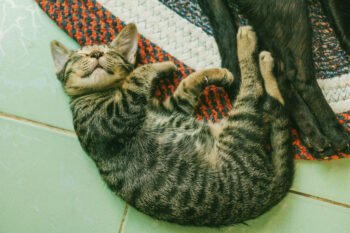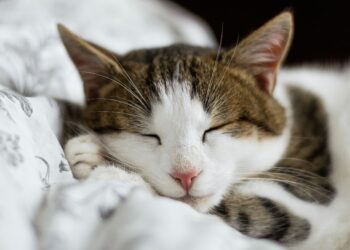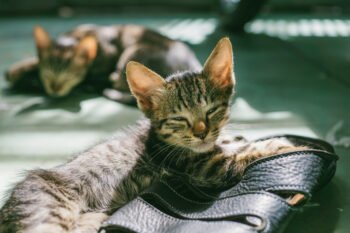Cats’ sense of smell is vital to their well-being. Many cat owners have seen this first hand when a cat with the sniffles or stuffy nose refuses to eat. Because the cat couldn’t smell the food, she refused to eat it. Careful sniffing tells the cat if something is safe to eat.
Cats have a pair of vomeronasal organs (also called Jacobson’s organs) on the roof of the mouth. When the cat wants to thoroughly investigate a particular scent, she will inhale through her mouth, usually curling her lips up at the same time, and bring the air over the roof of her mouth. When the cat curls her lips like this, she will often squint her eyes and maybe even flatten her ears as she concentrates. This makes her look like she is grimacing. This grimace is called a flehmen reaction. The vomeronasal organs will then analyze the scent molecule by molecule — almost as if the cat is tasting the smell.
When you come home from outside the house, your cat can smell what you had for lunch and for a mid-afternoon snack. She can smell the people you shook hands with and your neighbor you stopped to talk to and hug. She can smell the grass crushed under your shoes as you took a short cut across the lawn. The dog who tried to follow you home may cause your cat to flehmen so that she can get more information about him. Your cat’s sense of smell is so good, she can smell the difference between a gallon of water with a teaspoon of salt in it and plain water. In comparison, we think of salt as completely odorless!
Cats have scent glands on each side of the forehead, on the chin, the lips and along side the tail. They use these scent glands to mark or lay claim to people and things in their home. When your cat rubs up against your hand, your leg, the sofa and your bed, she is depositing her scent on those things. She will then use her sense of smell to identify “her” things, people and even other pets in the home.
If you want to have some fun with your cat’s sense of smell, take some small bits of different things, such as a bit of chicken, a cotton ball with some flowery perfume, a fragrant flower and, to make things interesting, a piece of smelly cheese — such as aged blue cheese. Place each different scent under a piece of paper towel (so your cat cannot see the item) and encourage your cat to investigate. Watch her sniff. Does she flehmen? What piqued her interest the most?







